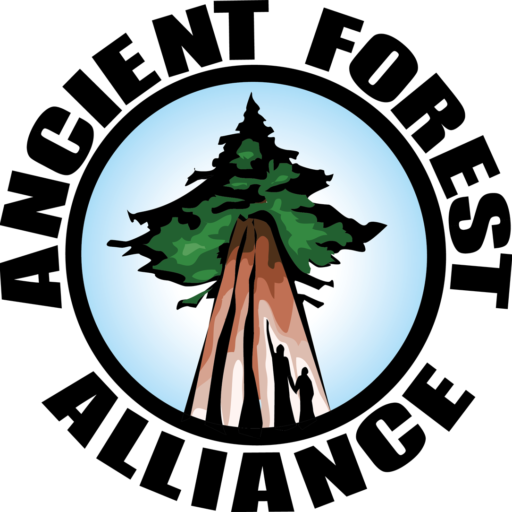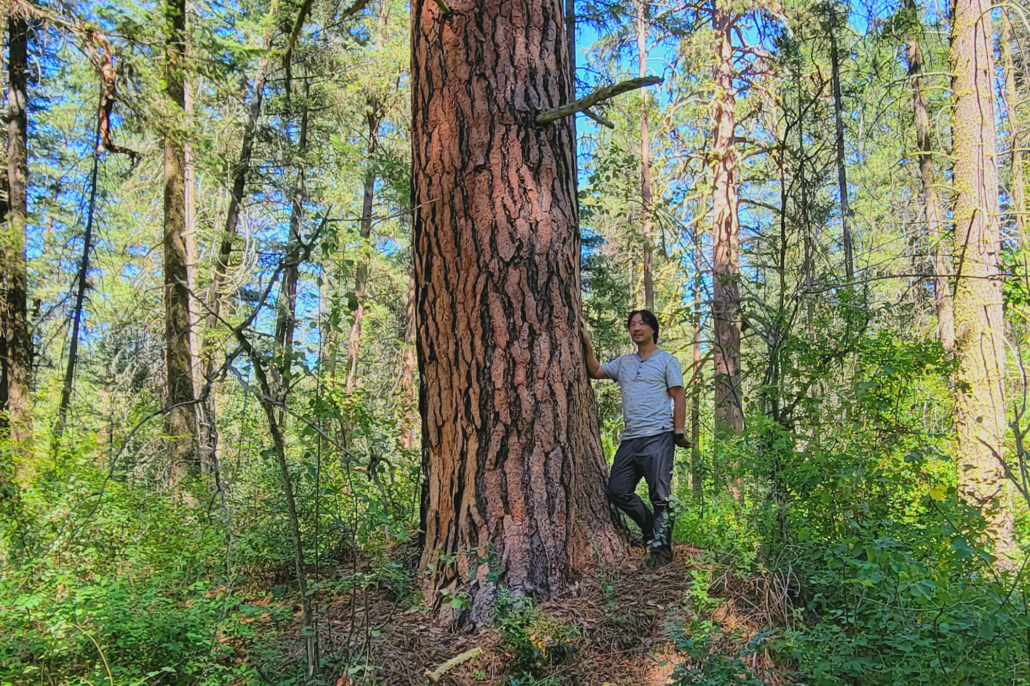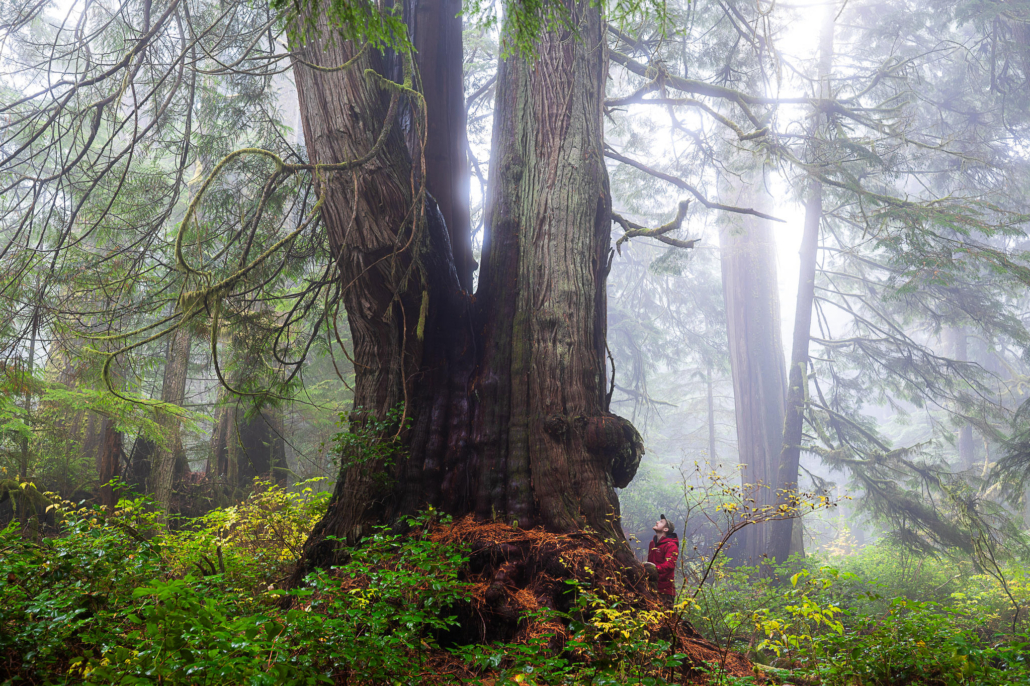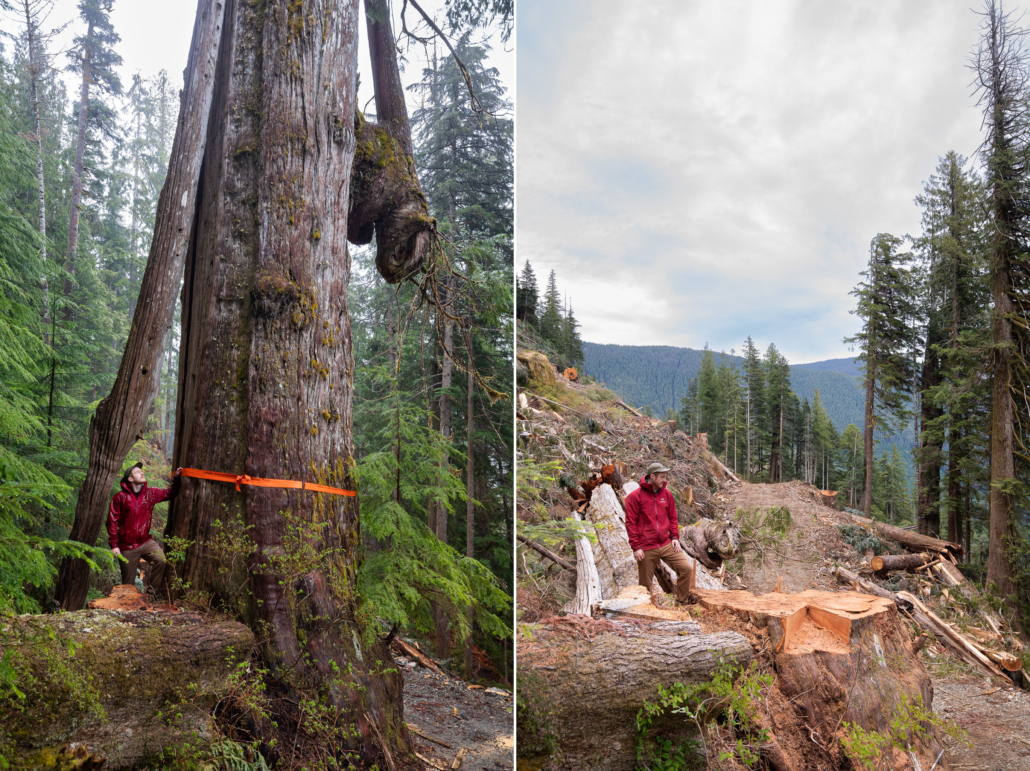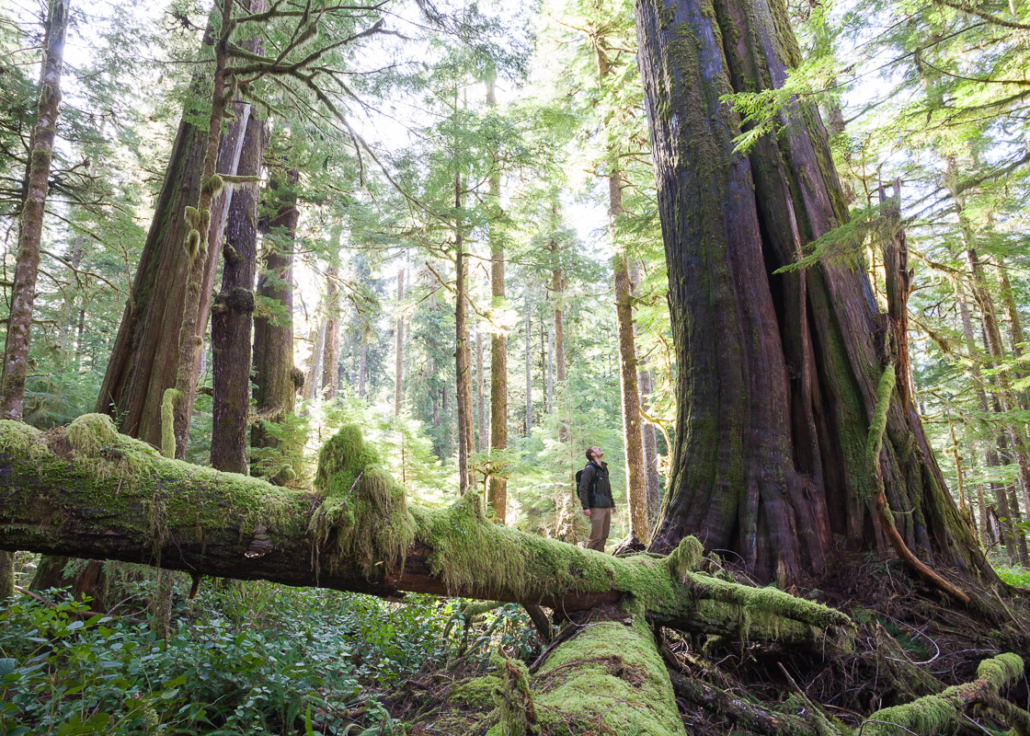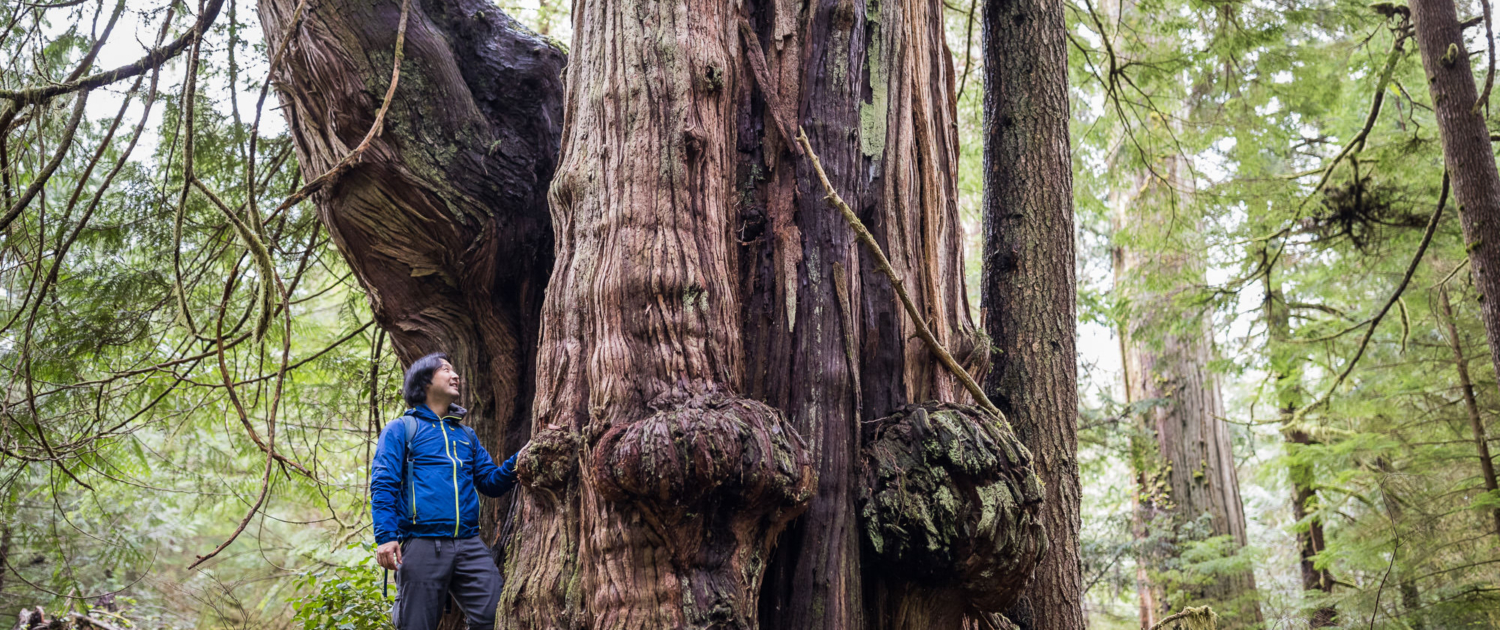 Nov 30 2022
Nov 30 2022Before COP15, Conservation Groups call on BC Government to Commit to Funding and Targets to Expand Protected Areas in BC
For Immediate Release
November 30, 2022
BC has a chance to protect the most endangered ecosystems and promote community economic, social and cultural well-being linked to nature conservation – and also to finally end the War in the Woods over old-growth forests.
In the lead-up to the UN Biodiversity Conference (COP15) in Montreal where 195 countries will meet next week to negotiate new international protected areas targets and policies, the Endangered Ecosystems Alliance (EEA) and the Ancient Forest Alliance (AFA) are calling on the BC government to commit to the federal protected areas targets to protect 25% by 2025 and 30% by 2030 its land and marine areas, at a bare minimum, and to ensure a significant federal-provincial funding package (the “Nature Agreement” that is currently being negotiated) that directs funding for the right “places, parties, and purposes” needed to ensure an effective protected areas system in BC.
The federal government has committed $3.3 billion over 5 years to expand terrestrial ($2.3 billion) and marine ($1 billion) protected areas, along with several billion dollars more for “natural climate solutions” that often overlap with nature protection initiatives.
BC’s share of those funds are between $200 to $400 million, yet the province has neither embraced the federal funds nor committed its own funds – nor even embraced the federal protected areas targets yet.
For the protection of the most at-risk old-growth stands, the federal government has also earmarked $55 million in a BC old-growth fund (a campaign for this fund was spearheaded by the Endangered Ecosystems Alliance with the Union of BC Indian Chiefs in 2020), contingent on BC providing matching funding for a total old-growth fund of $110 million – which again the BC government has not committed to.
For almost 2 years, the federal and BC governments have been in negotiations to develop a bi-lateral Nature Agreement on a funding package with protected areas targets for BC, yet still nothing has been announced just 1 week from the start of the UN Biodiversity Conference.
“Now is the time, in the lead-up to the UN Biodiversity Conference, for the BC government to commit to major federal funding and to provide its own funding on a sufficient scale. With significant funding and protected areas targets, including targets for all ecosystem types that ensures prioritization for the most underrepresented and at-risk ecosystems, such as the last of the ‘high-productivity’ old-growth stands with the biggest trees, we could see a historically unprecedented expansion of the protected areas system to safeguard the rarest and most endangered ecosystems in BC – and to end the half-century long ‘War in the Woods’. We’ve maintained for years that funding is the fundamental driver for protected areas expansion in BC, in particular to support First Nations sustainable economic development linked to new protected areas and for private land acquisition. Without this funding, major protected areas expansion in BC cannot happen at a scale and speed commensurate to the extinction and climate crises”, stated Ken Wu, Endangered Ecosystems Alliance Executive Director.
“Thousand-year-old trees with trunks as wide as living rooms and as tall as downtown skyscrapers are still being cut on a daily basis in BC. The provincial government has reaped billions from the logging of these highly endangered and irreplaceable ecosystems and now, with the planet facing a climate and biodiversity crisis that threatens the survival of even our own species, it’s time for them to give back. This means matching the federal government’s major funding commitments towards expanding protected areas in BC, adding additional funds of their own, and ensuring those funds are directed towards protecting the highest value forests that remain, not just scrub, rock, and ice. Leaving high-value old-growth forests standing needs to be made as economically viable for communities, even in the short term, as cutting them down”, stated TJ Watt, Campaigner and Photographer with the Ancient Forest Alliance.
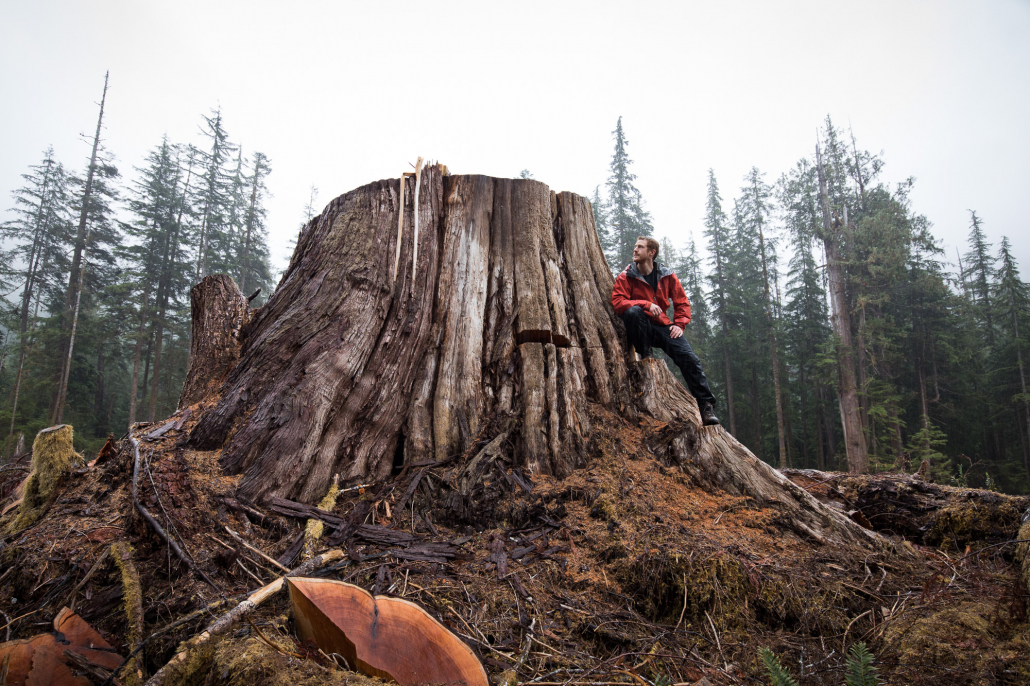
AFA’s TJ Watt beside an old-growth redcedar stump near Port Renfrew in Pacheedaht territory.
Across BC, most old-growth forests and endangered ecosystems are on the unceded territories of diverse First Nations, whose consent is a legal necessity to establish new legislated protected areas in the province. The British Columbian government is currently under pressure to help finance First Nations old-growth logging deferrals and protection, in particular to fund First Nations sustainable businesses and jobs linked to new protected areas, a process known as “conservation financing”. Across BC, numerous First Nations have an economic dependency on old-growth timber revenues that has been facilitated and fostered by successive provincial governments. Unfortunately, the provincial government has not committed the key funding to First Nations to help them develop economic alternatives to old-growth logging (in such industries as tourism, clean energy, sustainable seafood, or non-timber forest products like wild mushrooms) as was done in years past to secure the protection for large sections of BC’s Central and North Coast (ie. the Great Bear Rainforest) and Haida Gwaii, and as is currently underway to protect most of Clayoquot Sound. Without the key funding, many or most cases First Nations will have no choice but to default back to the status quo of old-growth logging on large parts of their territories.
That is, major funding worth several hundred million dollars is needed to support sustainable economic alternatives (ie. business development) for First Nations communities linked to Indigenous Protected and Conserved Areas and old-growth logging deferrals. Compensation currently exists for First Nations forestry workers (ie. the labour side) via the province’s $185 million fund to support BC forestry workers affected by old-growth logging deferrals, while the province has also provided $12 million (an insufficient amount) to help First Nations undertake land-use planning, including assessing old-growth logging deferrals and the impacts to their communities. However, it is the “business side” of the equation – the largest part of funding needs, estimated to cost about $600 to $800 million for First Nations in order to supplant their old-growth logging interests (for example, to protect much of the Great Bear Rainforest, which is 6% of the land area in BC, $120 million in conservation financing was brought in from environmental groups and the provincial and federal governments, and tens of millions more in carbon offset funding) that will enable them to protect the most at-risk old-growth forests in BC – that is lacking from government at this time. Additional funds are also needed by First Nations to protect non-old-growth forest ecosystems as well – second-growth forests, grasslands, wetlands, etc.
At its core, to actually protect the most contested and endangered high-productivity old-growth forests sought after by the timber industry with the biggest trees and greatest biological richness, the conservation financing for First Nations businesses must be tied to supplanting old-growth logging interests specifically in the stands most coveted for logging. Simply providing capacity funding or labour support, or even economic development funding not linked to protecting the most valuable old-growth timber, is a recipe for the biggest and best old-growth stands to still fall, while new protected areas skirt around these monumental stands and instead protect smaller trees in the lower-productivity old-growth stands typically at higher elevations, in poor soils or in boggy landscapes, and that have fewer species at risk and which are far more represented in the existing protected areas system.
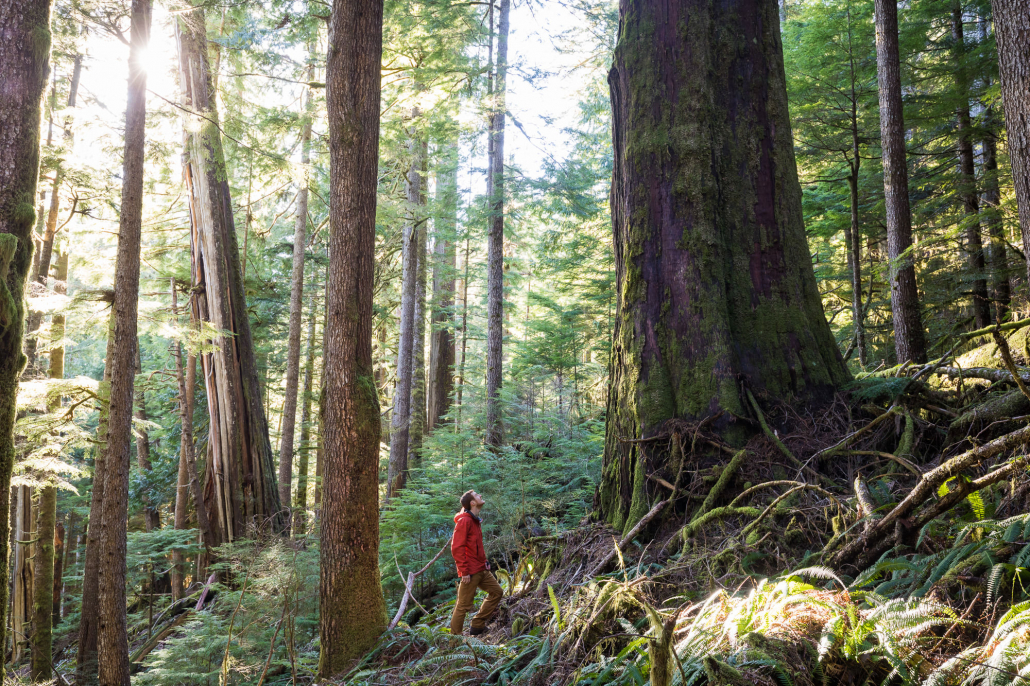
Unprotected old-growth forest at risk of future logging on Edinburgh Mountain near Port Renfrew in Pacheedaht territory.
In addition, to protect endangered ecosystems and old-growth forests on private lands, provincial and federal government funding is needed to purchase these lands. In BC, only about 5% of the lands are privately owned, concentrated on southeastern Vancouver Island, in the Lower Mainland, and in major river valleys in BC.
If the BC government ends up providing major funding and adopting the federal protected areas targets with a new Nature Agreement deal, there are still ways the agreement can come up short. For such a deal to be most effective, the funding must be directed to the key “places, parties, and purposes”:
Places: Priority must be given to the most endangered ecosystems that are most at risk from industry – in particular logging, agricultural conversion and suburban sprawl – in the major valley bottoms and lower elevations in southern BC where most of the people and industry are, and by no coincidence where most species and ecosystem at risk are. The government will tend to protect vast areas of lower productivity “rock and ice” – alpine areas at high elevations and far northern forests with minimal timber value in order to maximize the hectares protected for PR purposes and that minimize the impacts to most industries, which also minimizes protection for the vast majority of species and ecosystems at risk. These alpine, subalpine, far northern, and bog ecosystems are native ecosystems that deserve protection, but a far greater emphasis must be on saving the most contested, endangered ecosystems right now given the current ecological crisis.
The government also has to stop its “creative accounting” on how much they claim is protected in BC. About 15% of BC is in legislated protected areas – however, in some of its PR claims, the province has sometimes been adding an extra 4%, largely in tenuous conservation regulations, known as Old-Growth Management Areas and Wildlife Habitat Areas, that lack the permanency (OGMA’s can be moved around in chunks and logged, for example) and/or the standards (oil and gas and some logging is allowed in some types of WHA’s) of real protected areas.
Parties: Priority should be given to First Nations sustainable economic development linked to new protected areas and conservation reserves. Legally mandated corporate compensation for logging, mining and oil and gas companies should be years down the road – First Nations must come first, being Nations, as they decide the fate of their unceded territories. Land acquisition funding for private lands is also important.
In addition, as most First Nations have not initiated new land use planning processes where protected areas are decided, it is vital that much of the funding be “open” and uncommitted at this time to help drive protection options during the land use planning processes over the next couple years.
Purposes: Funding for the development of sustainable businesses for interested First Nations that is linked to new protected areas is by far the largest amount of funding needed – smaller funds are needed for First Nations capacity around land-use planning and deferral assessments and for interim jobs and labour needs. Without this core business development funding, protected areas will be add-ons that will largely skirt around the status quo of old-growth logging in the core areas with the biggest trees. The excuse of government saying that “First Nations haven’t been telling us they want conservation financing” is both incorrect in many cases, and often disingenuous when they haven’t even raised the possibility of any major conservation financing to First Nations.
Increasing the economic dependency of communities on old-growth logging, whether First Nations or non-First Nations, is the wrong approach for these conservation funds, including tenure buy-backs if they lack legal conservation measures to protect the remaining old-growth and endangered ecosystems.
Provincial funds are also needed from other sources – but not from the conservation funds of a Nature Agreement – to support incentives for a value-added, second-growth forest industry and the expansion of a smart, second-growth engineered wood products industry in general across BC.
It should also be noted that forestry revenue-sharing agreements do not constitute “conservation financing” for First Nations, contrary to the recent PR-spin of the BC government – quite the oppositive, it entrenches the economic dependency of the communities on old-growth logging (which would be akin to sharing oil and gas revenues, and then expecting the communities to then stop oil and gas activities).
“We hope the new Premier David Eby takes this chance for a major protected areas funding agreement of a sufficient size and with ambitious targets, aimed at the most endangered ecosystems and that prioritizes support for First Nations. He can end the War in the Woods and ensure the protection of the amazing diversity of endangered ecosystems across BC – what a great start to his first 100 days that would be and a historic leap forward for the planet!” stated Ken Wu, Endangered Ecosystems Alliance Executive Director.
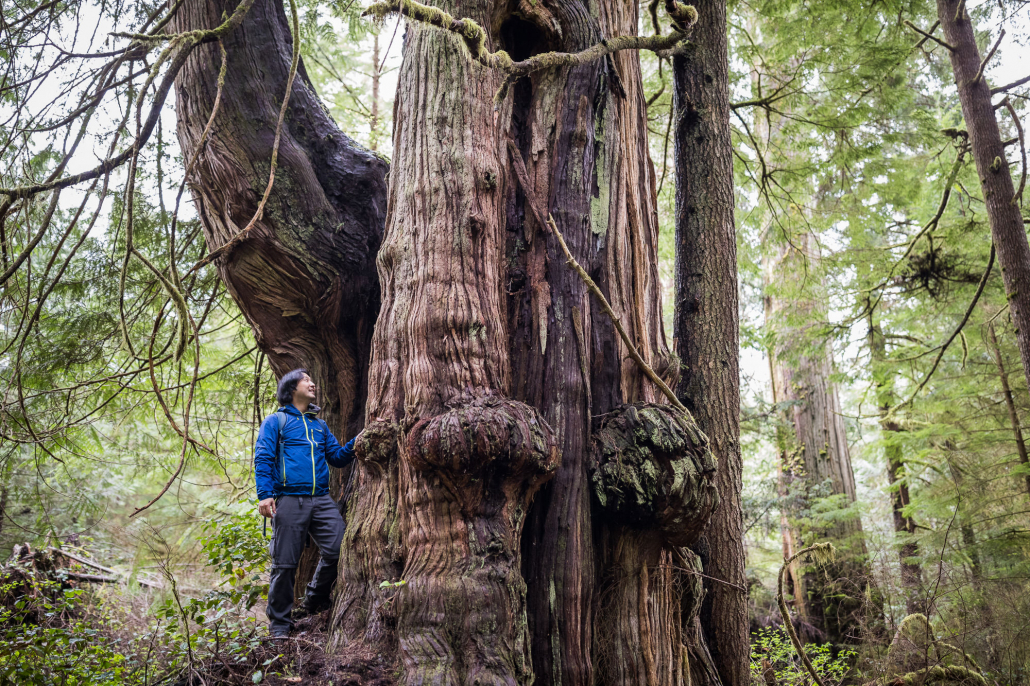
EEA Excutive Director, Ken Wu, beside an incredible unproteted old-growth redcedar at Jurassic Grove near Port Renfrew in Pacheedaht territory.
More background info:
Old-growth forests are vital to support endangered species, First Nations cultures, the climate, clean water, wild salmon, and tourism.
Protecting nature is not only vital to avert the extinction crisis and the climate crisis (by drawing down vast amounts of atmospheric carbon into protected forests, grasslands, and wetlands) but research shows that nature and protected areas are vital for our health and for the economy.
Increasing studies show that being in forests and nature supports our mental and physical health, reducing all sorts of ailments and boosting our immune systems. Recent research has even shown that many trees and plants emit a defensive compound called “phytoncides” which boost our immune systems when we breathe them in.
Studies also show that protected areas, including protecting old-growth forests, attract and foster more diverse, resilient, and prosperous economies, including supporting businesses and jobs in the tourism and recreation sectors; commercial and recreational fishing industry by sustaining clean water and fish habitat; real estate industry by enhancing property values in communities near protected green spaces; non-timber forest products industries like wild mushroom harvesting; high tech sector by attracting skilled labour that locates to areas with a greater environmental quality of life; and by providing numerous ecosystem services that benefit businesses.
The province appointed an independent science team, the Technical Advisory Panel, in 2021 who recommended that logging be deferred on 2.6 million hectares of land with the grandest (biggest trees), oldest and, rarest old-growth stands while First Nations land use plans are developed over a couple years to decide which areas are permanently protected in legislation. These recommended deferral areas have been put forward by the BC government for the consent of local First Nations to decide which areas get deferred. Currently about 1 million of the recommended 2.6 million hectares (ie. 40%) are under deferral, while some areas have been logged. Unfortunately, the provincial government has not committed any concrete funding to First Nations to offset their lost revenues should they accept old-growth logging deferrals in areas where they have logging interests, nor to help them develop economic alternatives to old-growth logging.
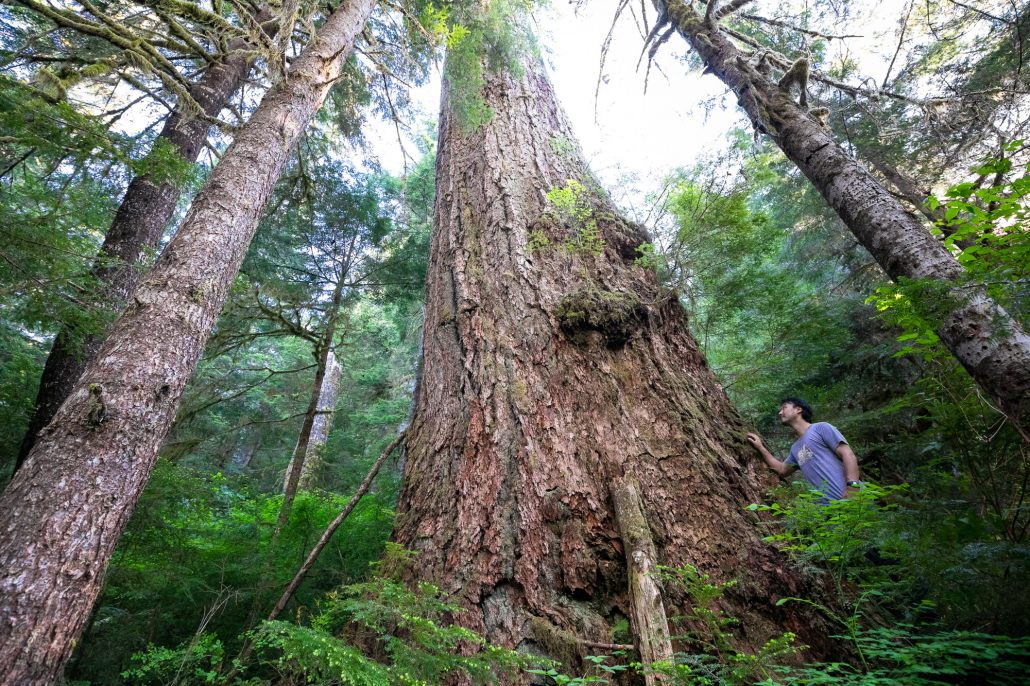
EEA Executive Director, Ken Wu, by an old-growth Douglas-fir in the Nahmint Valley near Port Alberni on Vancouver Island in Hupacasath, Tseshaht, & Uclulet territory.
